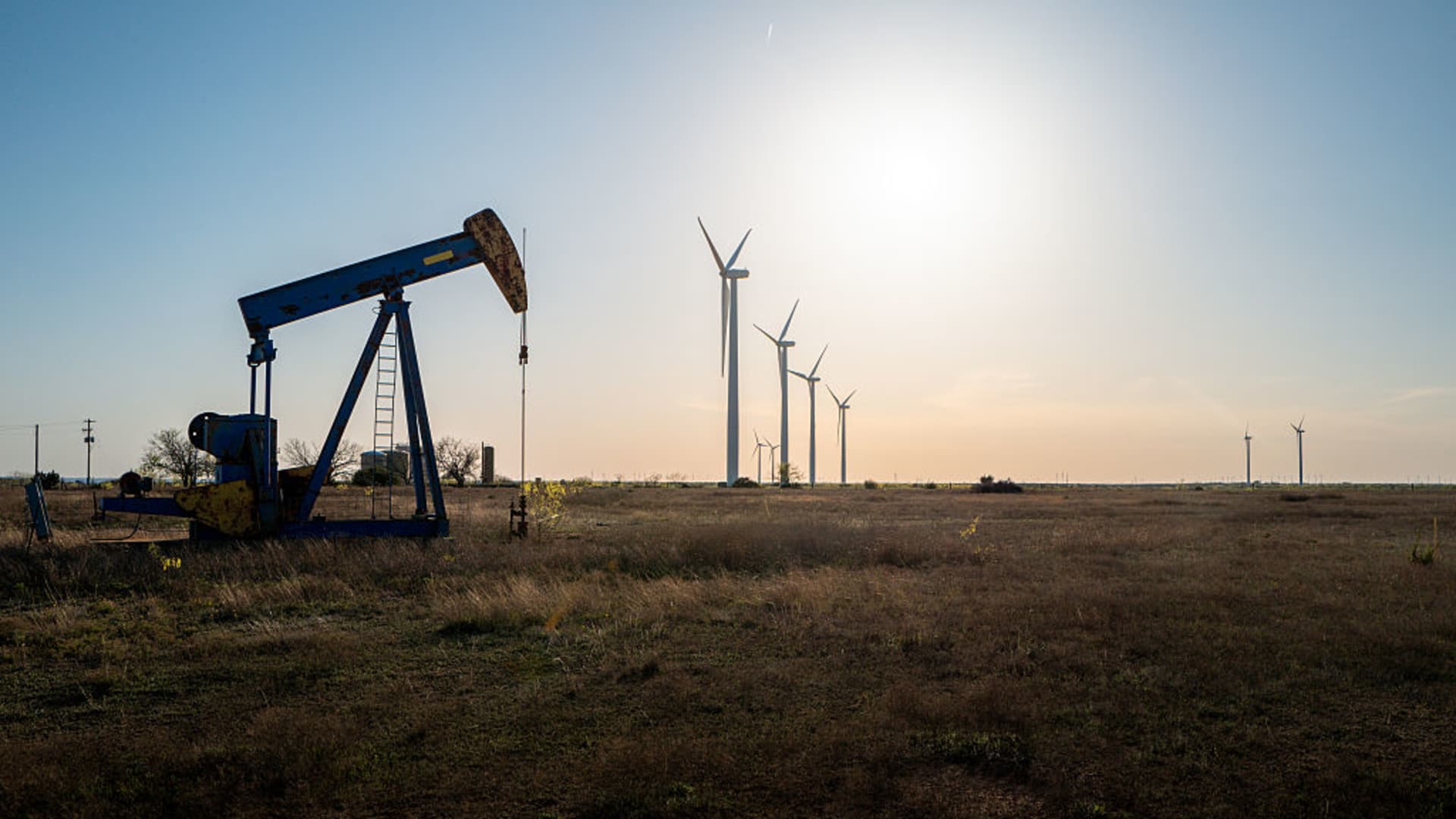Energy stocks ended a rough month with a thud, and that could be an early warning alarm for the state of the U.S. economy. The S & P 500 energy sector fell 2.6% on Wednesday alone, the worst of the 11 stock groups in the benchmark index. Energy was also the worst performer for the month of April, sliding almost 14%. That’s the biggest monthly decline for the roughly $27 billion Energy Sector SPDR Fund (XLE) since June 2022. XLE 1M mountain Energy was the worst performing group in the S & P 500 in April. Weak energy stocks mirror a similar decline in the price of oil. Futures for U.S. benchmark West Texas intermediate crude are now trading at about $60 per barrel, down from $71.48 at the end of March. The sharp slide could be a sign that oil traders see a recession on the horizon — and maybe that industrial demand has already started to drop in some areas — as the world economy braces for the impact of the Trump administration’s high tariffm policy. “There is of course a strong link between global trade, industrial activity and cyclical commodity prices such as oil,” Francisco Blanch, commodity and derivative strategist at Bank of America, said in a note to clients Wednesday. “So the drop in cyclical commodity prices following the Liberation Day announcement is simply a reflection of these well-established dynamics. With global trade poised to contract at least between 1% and 3% on the back of the trade war, we believe the impact on global energy demand will be significant.” To be sure, the falling price of oil is not only a tariff and demand story. Supply expectations also play a role, as the Trump administration has pushed to expand drilling in the United States and OPEC+ announced production hikes in early April. But it’s hard for energy companies — and oilfield services firms in particular — to make money when commodity prices are falling, even when regulations are loosened. Andrew Smith, chief investment officer at Delos Capital Advisors in Dallas, said his firm had some energy investments on its target list to buy heading into 2025 but have scuttled those plans given slowing economic conditions. The good news is that lower energy prices could help keep a lid on inflation by offsetting a rise in consumer goods hit by tariffs, but cheaper oil is a potential warning sign for the direction of the economy as a whole. “It’s a telling sign that, just because these tariffs are coming, we’re not going to see any industrial pick up or actual economic growth pick up from the manufacturing sector or the energy sector,” Smith said. — CNBC’s Michael Bloom contributed reporting.
April was a brutal month for energy stocks. Why that could be a bad sign for the rest of the market












